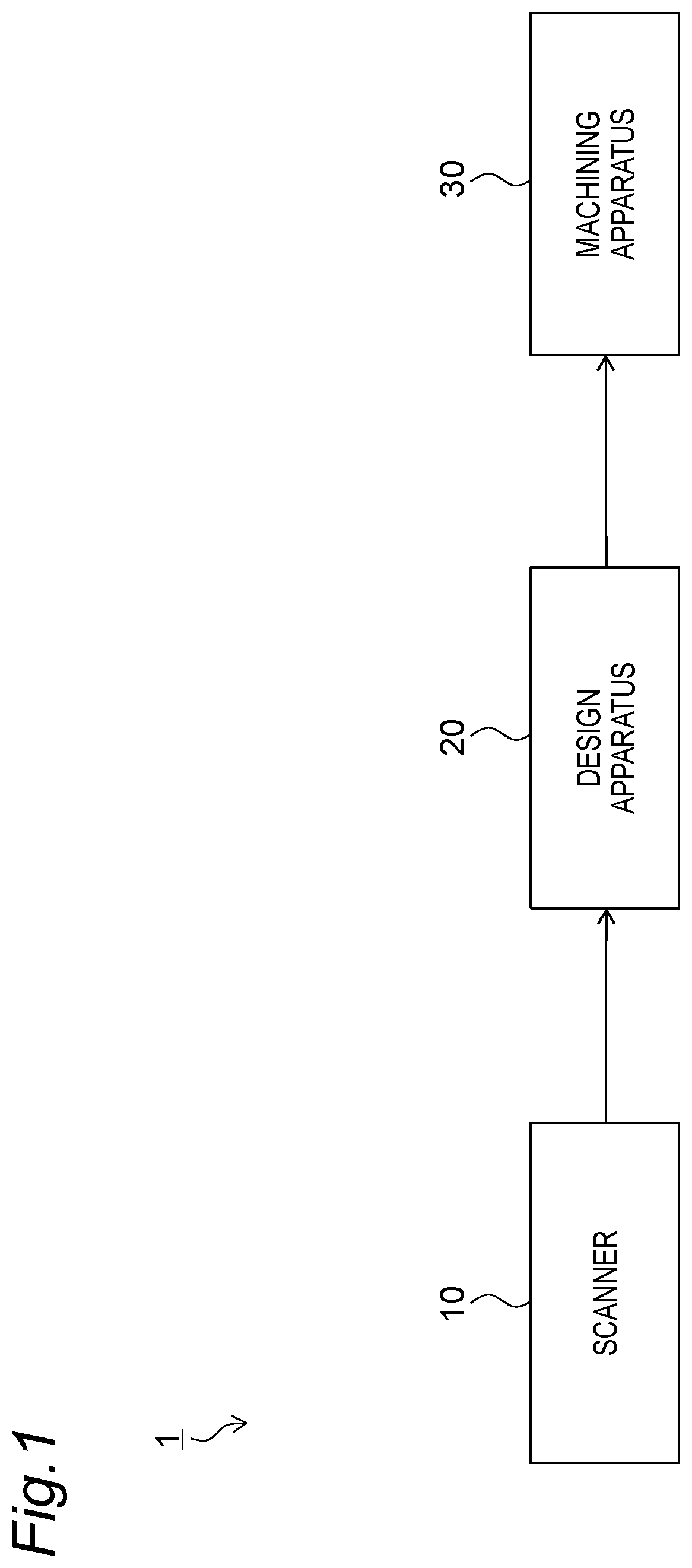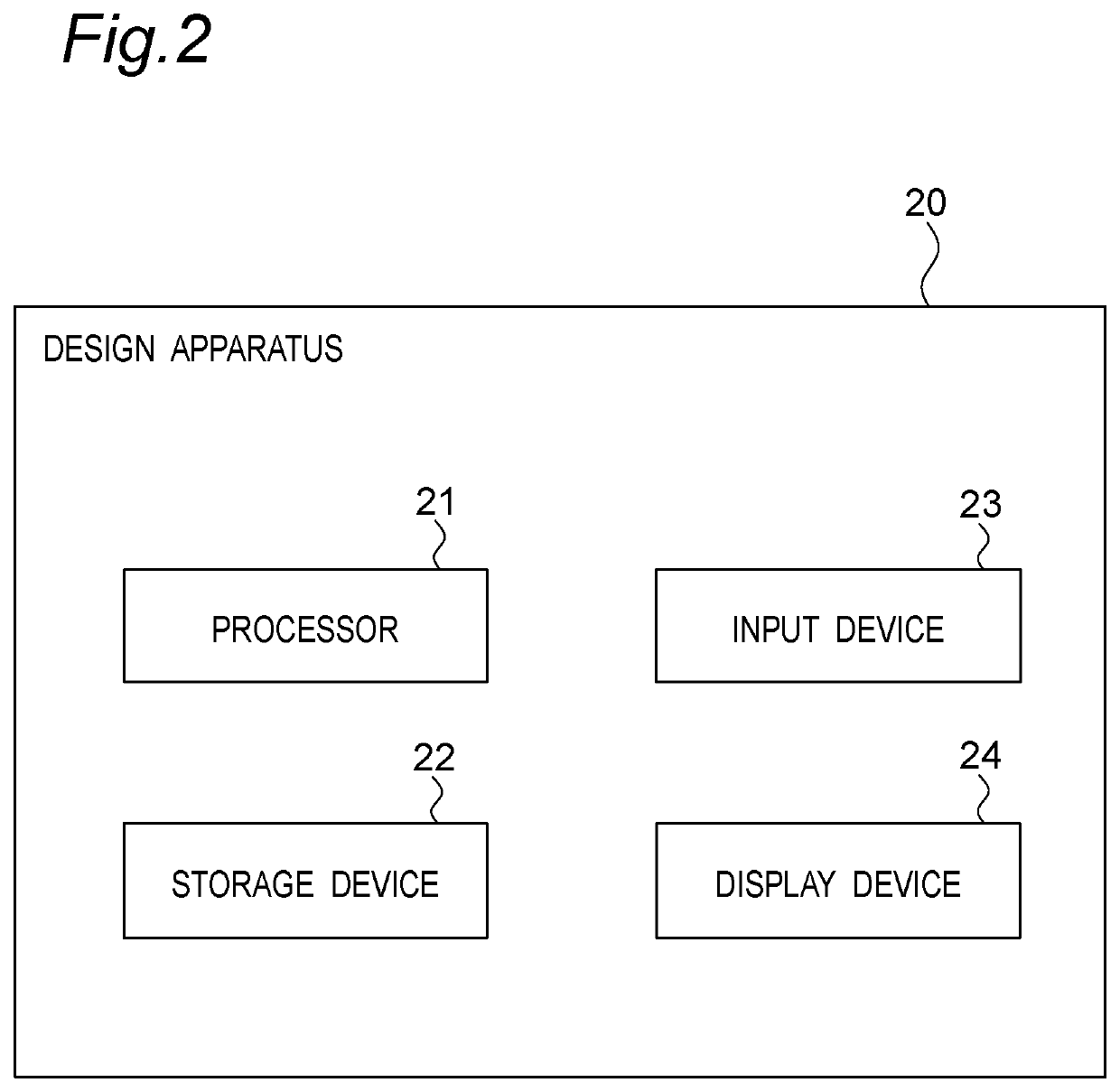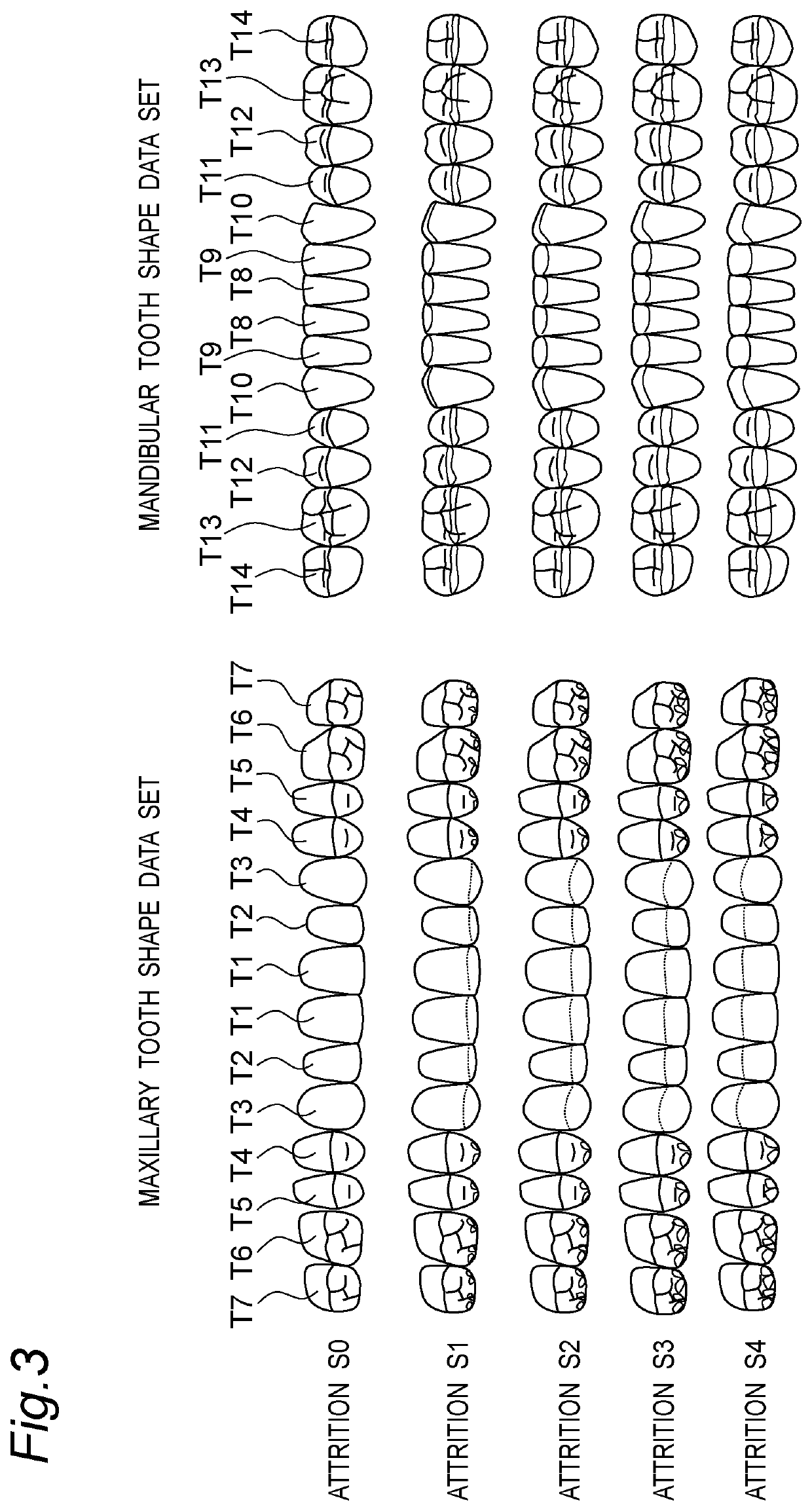[0136]According to the design method and the design apparatus of the first embodiment of the present invention, the following effects can be achieved.
[0137]The dental prosthetic device design method includes the acquisition step ST1, the determination step ST2, the readout step ST3, the selection step ST4, the placement step ST5, and the creation step ST6. The acquisition step ST1 acquires scan data of maxillary and mandibular dentitions. The determination step ST2 determines a tooth restoration site based on the scan data. The readout step ST3 reads out plural pieces of attrition shape data of a tooth related to the restoration site, from the maxillary and mandibular tooth shape data sets having plural pieces of attrition shape data S0 to S4 with different degrees of attrition for each tooth of the maxillary and mandibular dentitions. The selection step ST4 selects attrition shape data from among the plural pieces of attrition shape data, in accordance with the degrees of attrition of the maxillary and mandibular dentitions. The placement step ST5 places the selected attrition shape data at the restoration site. The creation step ST6 creates shape data of the dental prosthetic device from the attrition shape data placed at the restoration site.
[0138]By virtue of such a configuration, the dental prosthetic device can be designed based on the attrition shape data selected in accordance with the degrees of attrition. It is hereby possible to reduce the amount of work for designing the dental prosthetic device and to shorten the work time, enabling the dental prosthetic device to be efficiently designed.
[0139]The plural pieces of attrition shape data include plural pieces of tooth shape data in which the attrition portion is drilled stepwise from the crown side toward the root side, for each of a plurality of teeth. Such a configuration can accommodate the intraoral environment of various patients. For example, it can handle from the maxillary and mandibular dentitions of a patient with a large degree of attrition to the maxillary and mandibular dentitions of a patient with a small degree of attrition. This makes it possible to design the dental prosthetic device more efficiently.
[0140]The maxillary and mandibular tooth shape data sets include maxillary tooth shape data and mandibular tooth shape data. The maxillary tooth shape data includes shape data of the upper central incisor T1, the upper lateral incisor T2, the upper canine T3, the upper first premolar T4, the upper second premolar T5, the upper first molar T6, and the upper second molar T7. The mandibular tooth shape data includes shape data of the lower central incisor T8, the lower lateral incisor T9, the lower canine T10, the lower first premolar T11, the lower second premolar T12, the lower first molar T13, and the lower second molar T14. Such a configuration enables the dental prosthetic device to be designed more efficiently.
[0141]The maxillary tooth shape data has plural pieces of attrition shape data for each of the upper central incisor T1, the upper lateral incisor T2, the upper canine T3, the upper first premolar T4, the upper second premolar T5, the upper first molar T6, and the upper second molar T7. In the plural pieces of attrition shape data of the upper central incisor T1, its lingual surface in contact with the opposing tooth is drilled stepwise within the range of 0.00 mm or more and 1.50 mm or less from the crown side toward the root side. In the plural pieces of attrition shape data of the upper lateral incisor T2, its lingual sur
 Login to view more
Login to view more  Login to view more
Login to view more 


